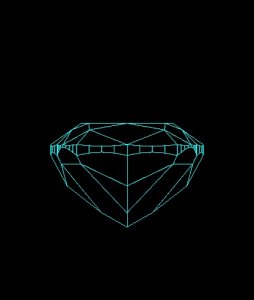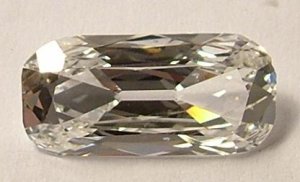- Joined
- Sep 3, 2000
- Messages
- 6,743
Most modern cut cushion shaped diamonds which are not cut to mimmic round H&A type stones have a vry thick row of just slightly angled facets just beneath the girdle line of the stone. Instead of a 40/41 degree angle found on most round diamonds, these are just very slightly inclined inward. While not being included in any lab''s girdle thickness comments, they happen to act just like a VERY VERY thick girdle in retaining added weight while not improving any visual aspect of the diamond. This added weight gets consumers to buy the visual size of 8/10 of a carat and pay for ther weight of 10/10 of a carat. Is that a deal or what?....No way.
I won''t say that many of these cushions are not highly attractive, because they are visually appealing, but if there were any standards of cut being enforced such as AGS cut grading or GIA cut grading, this method of hiding the girdle in the pavilion would probably dissappear.
When you look for a cushion cut get a side view of the stone and see if the pavilion is a rounded, bulging shape. If it is, you''ll likely find this row of thickening facets below the girdle. Secondly, multiply the average diameter x depth x .0061 and you will have the weight if it was a round diamond. This does not take the squared corners into account, but it shows you something important about the visual size versus the weight you are being asked to pay for. While adding 5% to 10% for the corners may make the comparison more valid, it may help you shop for effectively cut cushions.
Cushions cut for the H&A effect much more closely imitate round cutting parameters. You''ll pay more and may find you are getting more at the same time. You can always opt for a slightly lighter stone which gives the same outcome both for the dollar and visually.
I won''t say that many of these cushions are not highly attractive, because they are visually appealing, but if there were any standards of cut being enforced such as AGS cut grading or GIA cut grading, this method of hiding the girdle in the pavilion would probably dissappear.
When you look for a cushion cut get a side view of the stone and see if the pavilion is a rounded, bulging shape. If it is, you''ll likely find this row of thickening facets below the girdle. Secondly, multiply the average diameter x depth x .0061 and you will have the weight if it was a round diamond. This does not take the squared corners into account, but it shows you something important about the visual size versus the weight you are being asked to pay for. While adding 5% to 10% for the corners may make the comparison more valid, it may help you shop for effectively cut cushions.
Cushions cut for the H&A effect much more closely imitate round cutting parameters. You''ll pay more and may find you are getting more at the same time. You can always opt for a slightly lighter stone which gives the same outcome both for the dollar and visually.












300x240.png)